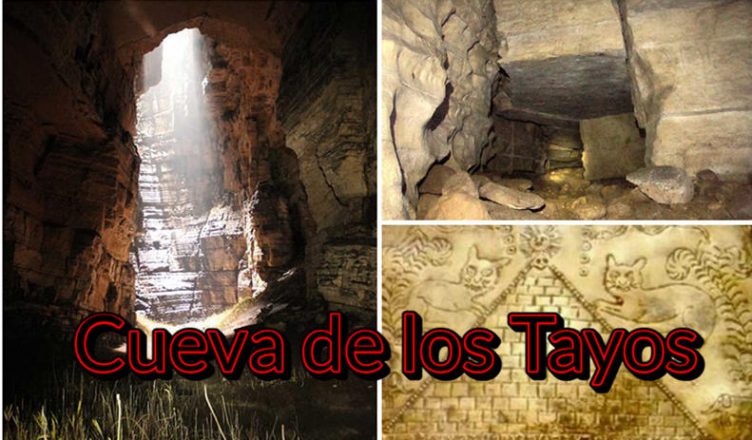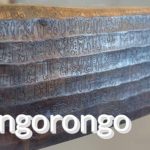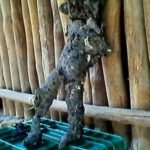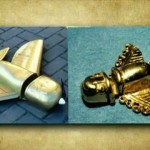The vastness of human history mirrors the expansiveness of the universe, and the myriad mysteries on Earth only deepen our curiosity about our own existence and the cosmos. The golden cave, known as Cueva de los Tayos, discovered in the Taurus Mountains of Ecuador, is a captivating archaeological enigma that leads our thoughts to another possibility in human history. Spanning over 12,000 years, this artificially excavated cave is not only locally referred to as the “golden cave” but also stands as a fascinating underground marvel. Hidden in the Morona Santiago Province of the Loja region in the Republic of Ecuador, this mountainous area has become a destination for archaeologists and adventurers alike.
In a documentary created by Father Crespi in 1927, the existence of this mysterious cave was first revealed. Indigenous residents presented the priest with handcrafted items from the cave, disclosing their origin. This information reached Father Crespi, prompting him to display these artifacts in a private museum in Cuenca and calling for professional archaeologists to conduct a thorough investigation. This ancient “golden cave” has prompted scientists to reconsider the possibilities in human history, sparking deeper reflections on whether unknown civilizations exist on Earth. In the vastness of the universe, we may be but tiny beings, and this golden cave serves as a gateway to the unknown. With further archaeological discoveries and advancements in scientific research, we may gain a better understanding of the mysteries surrounding both the universe and our own history.
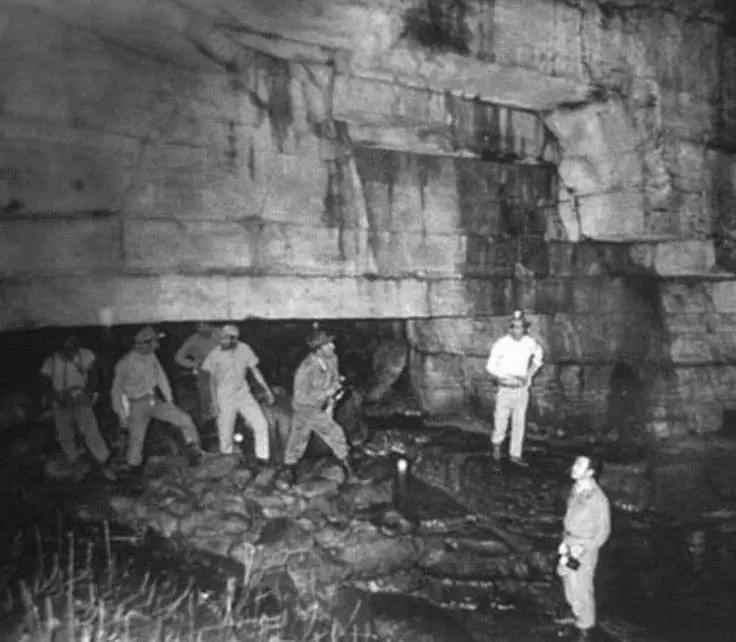
The Mystery of Ecuador: The Cueva de los Tayos and the Enigmatic History of the Golden Cave
Ecuador’s Golden Cave, commonly referred to by readers as the South American Golden Cave, actually has a more official Spanish name, “Cueva de los Tayos,” translated into English as the “Cave of the Oilbirds.” Oilbirds are a species of birds that inhabit South America, known for their fatty bodies, which were traditionally captured by local indigenous people for oil extraction. The scientific name for these birds is Oilbirds. The cave is located in the high tropical rainforest of the Morona-Santiago Province, approximately 1.2 miles south of the Santiago River, at an altitude of about 800 meters. Formed in the thin layers of limestone and shale, the cave has three entrances, a length of 4.6 kilometers, and, as of 2023, is the deepest explored cave within Ecuador.
The earliest Western documentation of this cave can be traced back to 1860. Italian explorer Pino Turolla explored the cave in 1969 and provided a detailed description in his book “Beyond the Andes.” However, the cave gained global attention primarily due to two individuals—Juan Móricz, a Hungarian-Argentinian, and Erich von Däniken, the Swiss author of the well-known “Chariots of the Gods.” Juan Móricz made some intriguing statements, including the claim of Hungarian origins in the Americas. Part of his narrative revolves around the description of the Golden Cave. He asserted that during a local tribal survey in 1965, he discovered the cave. Later, in 1969, with authorization from the Ecuadorian government, he led an expedition to systematically survey the cave, claiming it extends for thousands of kilometers, reaching deep into the Earth. He further alleged the discovery of numerous ancient artifacts within the cave, including golden sculptures of lions, elephants, displayed in a vast artificial hall. Additionally, he mentioned peculiar stone carvings resembling dinosaur patterns and, most notably, a golden book inscribed with mysterious symbols. However, Juan Móricz’s statements have never been officially confirmed by any governmental organization.
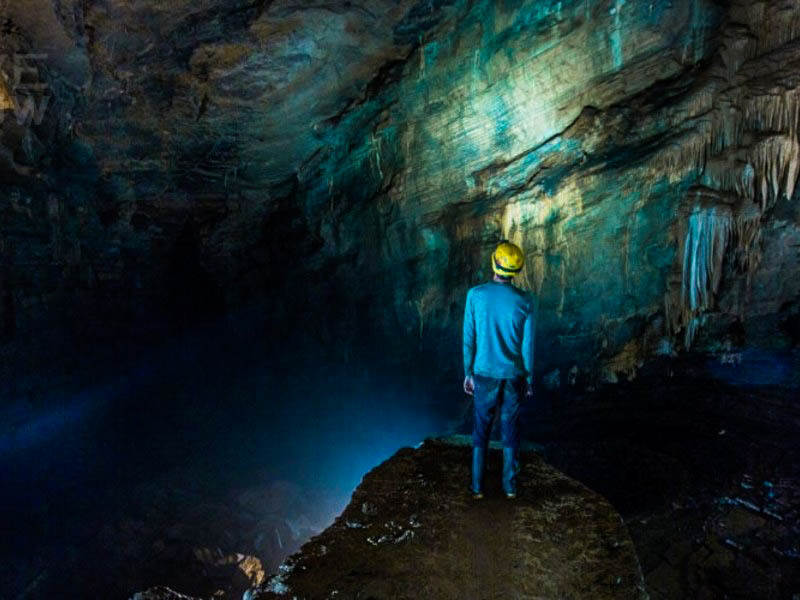
Exploring the Enigma: Erich von Däniken, Juan Móricz, and the Intriguing History of Cueva de los Tayos
Erich von Däniken, through an interview with Juan Móricz and blending his own perspective, mentioned the cave in his 1973 publication “Gold of the Gods,” associating it with a lost prehistoric extraterrestrial civilization. Given von Däniken’s international influence and prior recognition from his 1968 book “Chariots of the Gods,” the tale of the Oilbird Cave quickly spread worldwide. This caught the attention of the mainstream scientific community.
In 1976, Scottish explorer Stan Hall and scientists from the British Museum organized the largest and most costly cave expedition in history, with over 100 participants. This included experts from various fields, military personnel from the UK and Ecuador, a film production team, and the renowned Neil Armstrong, the first human to step onto the moon. The expedition, funded by the governments of Ecuador and the UK, thoroughly explored the cave, conducted precise analyses and surveys, and produced detailed maps.
While some physical features of the cave matched Móricz’s descriptions, and items of interest to zoology, botany, and archaeology were discovered, there was no evidence supporting von Däniken’s peculiar claims. The research team found well-organized passages deep within the cave and burial sites dating back to around 1500 BC. This grand-scale expedition, involving notable figures, stirred significant global interest in the story of Cueva de los Tayos.
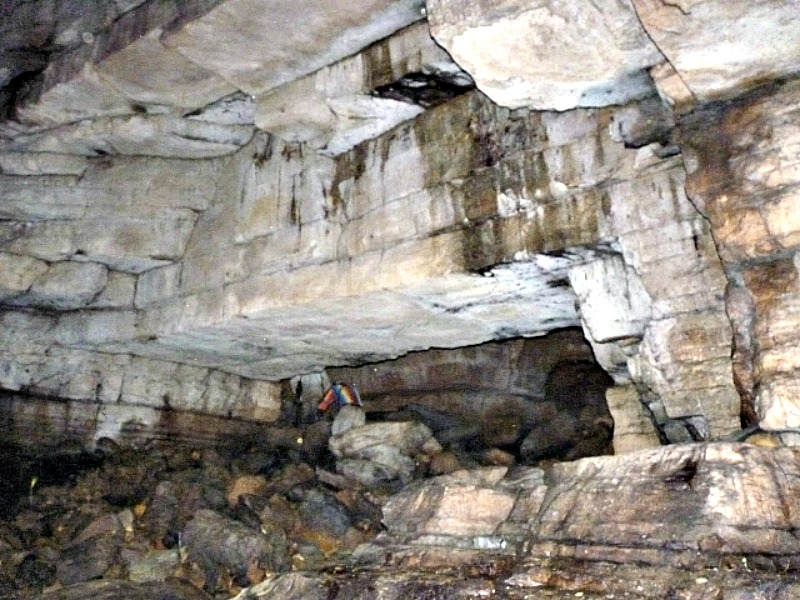
As the expedition failed to uncover the so-called mysterious artificial hall and peculiar artifacts, Juan Móricz had to defend his claims. He expressed mistrust in the expedition team, stating that he and the local indigenous people didn’t disclose the true location of the cave to the public. He also refused to provide images of the discovered artifacts and the golden book, declaring that the explored cave was not the real Oilbird Cave.
Despite controversy surrounding the Oilbird Cave from its inception, the enthusiasm surrounding it has not waned over the decades. The cave has become a frequent subject in television programs and scientific expeditions. Subsequent explorations revealed traces of the oldest human habitation in the cave dating back to the late Paleolithic era (48,000–12,000 BC), providing shelter for ancient humans as the glacial period ended. Around 9,000 years ago, with improved Earth’s climate, ancient people left the cave, migrating south to parts of Peru and the northern regions of Chile. By the Neolithic era, around 3,000 BC, the cave was considered inhabited, with evidence of ceramic usage confirmed by radiocarbon dating from the University of Munich, approximately around 1,500 BC. The Shuar people began settling in the region, eventually merging with the cave’s indigenous inhabitants.
The Enigma of Cueva de los Tayos: Legends, Gold, and the Legacy of Father Crespi
Until now, all scientific expeditions to the cave have failed to discover any unique gold artifacts. However, the region where the cave is located is indeed a significant gold-producing area within Ecuador. The capital of Morona-Santiago Province, where the cave is situated, was historically a thriving gold mining center. The World Gold Council confirms at least 15 gold-bearing veins in the southeast of Ecuador. Since the Spanish invasion, a fervor for gold artifacts has troubled Ecuador. Legend has it that Juan Valverde left a treasure map for the Spanish king, revealing the location of a hidden gold treasure belonging to Inca King Atahualpa. Regardless of the existence of this legendary gold treasure, the issue of unauthorized looting of valuable artifacts from ancient indigenous tombs and monuments has persisted in recent years.
The ancient people of Ecuador were highly skilled gold workers, and numerous gold treasures have been found in tombs across different regions of the country since the Spanish colonization. At this point, both explorers and scientific teams have been unable to present or discover any peculiar prehistoric artifacts within Cueva de los Tayos. It seems that the fantastical legends surrounding the cave in academic circles can be concluded. However, legends are not always entirely based on the fanciful creations of individuals; many times, they are rendered with a foundation in reality. Regarding whether the cave ever housed the legendary golden book and other prehistoric artifacts, one cannot overlook another significant figure in the realm of South American exploration – Father Crespi, whose story intertwines closely with the cave.
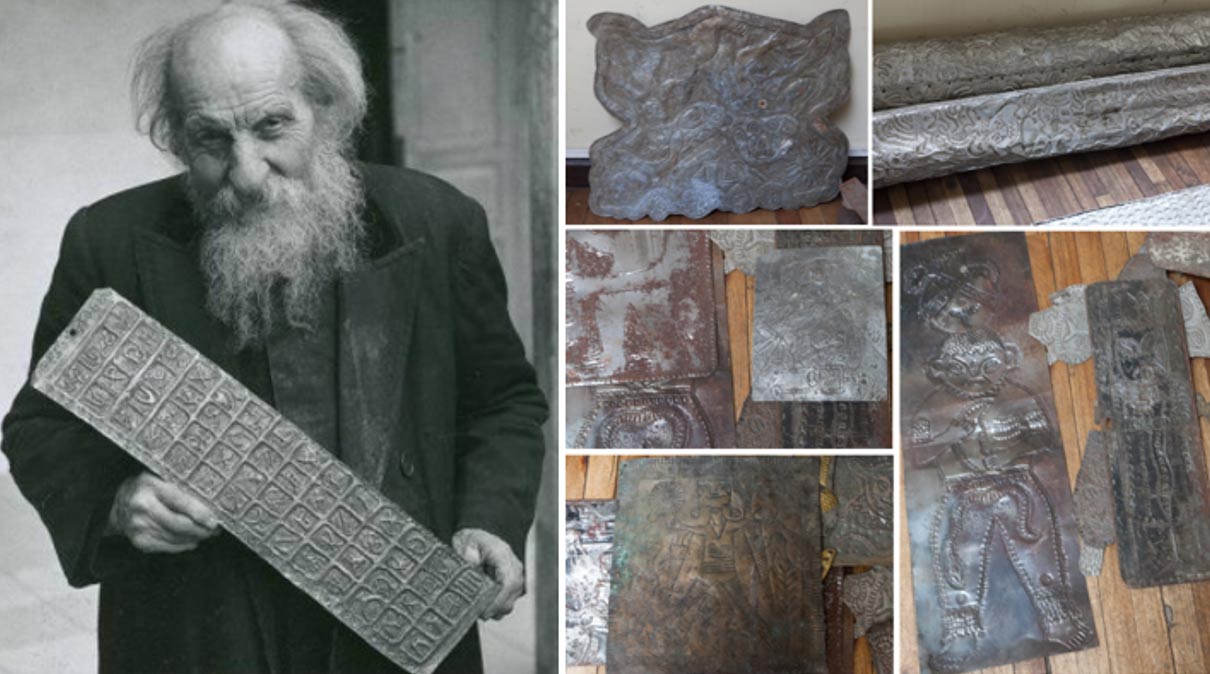
Father Carlos Crespi Croci, a Salesian monk born in Italy in 1891, dedicated 59 years of his life to charitable work in Ecuador. Known for his diverse talents as an educator, anthropologist, botanist, artist, explorer, filmmaker, and musician, Father Crespi carried out humanitarian aid work in the Andean town of Cuenca, Ecuador, from 1923 until his death in 1982.
Father Crespi’s commitment extended beyond Cuenca’s people, as he showed a deep interest in various indigenous tribes across Ecuador, seeking to understand their cultures and traditions while providing assistance whenever possible. In return for his dedication, local residents and indigenous people started gifting him with crafts and ancient artifacts as tokens of gratitude. These items came from various regions within Ecuador and even from abroad, representing almost all indigenous cultures in the country. Regardless of the value of the gifts, Father Crespi always expressed profound gratitude.
Reluctant to accept these items without reciprocation, Father Crespi began compensating some donors for the cost of bringing him gifts. Over time, the collection amassed by Father Crespi exceeded 50,000 items, many of which were stored in the courtyard of the Maria Auxiliadora Church. Unfortunately, in 1962, a large fire destroyed a significant portion of these artifacts. After Father Crespi’s passing, the remaining items were relocated, leaving almost no trace. Various speculations surround the surviving artifacts from the fire – some claim they are stored in the basement of Maria Auxiliadora, while others suggest they were sold to private collectors or transported to the Vatican.
The Mysterious Collection of Father Crespi: Unveiling the Golden Wonders of Oilbird Cave
In Father Crespi’s extensive collection, some artifacts are claimed to originate from Oilbird Cave. Many of these items are crafted from gold, including numerous paper objects resembling gold foil. These items are adorned with peculiar patterns and symbols, and some gold foil pieces bear inscriptions in ancient languages. Some artifacts exhibit clear influences from ancient Sumerian and Babylonian styles, yet they remain unidentified and untranslated. In the mid to late 1970s, American explorer and writer Richard Wingate visited Father Crespi, capturing a substantial portion of the artifact collection. He stated, “In a dusty, narrow shed adjacent to the Maria Auxiliadora Church in Cuenca, Ecuador, lies one of the most precious archaeological treasures on Earth. Stored here are dazzling gold artifacts worth over a million dollars, along with plenty of silver. However, the tangible value of this forgotten treasure is not its primary significance. Some items have been identified as ancient artifacts from Assyria, Egypt, China, and Africa. Their craftsmanship and beauty are so impeccable that any museum curator would consider them top-tier collections.”
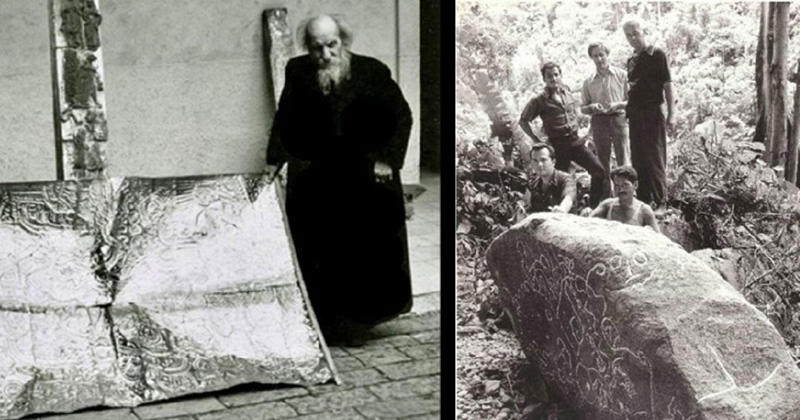
This treasure, recognized as the most peculiar ancient archaeological artifact collection in existence, holds value not just for its material worth but for the historical questions it raises, demanding answers. However, historians remain ignorant of it, and mainstream archaeological journals intentionally overlook it. Fortunately, Richard Wingate’s interview with Father Crespi, documented visually, allows people to witness some of the priest’s extraordinary collection. Interested individuals can search online to explore these artifacts.
It must be acknowledged that Von Däniken’s 1973 publication, “The Gold of the Gods,” played a significant role in bringing Father Crespi’s collection to worldwide attention. In the book, he claims that Juan Moricz discovered a series of tunnels in Ecuador’s Oilbird Cave containing a “metallic library” and numerous gold artifacts. Some of these items were reportedly given to Father Crespi by local indigenous people, forming a controversial part of his collection. Additionally, Däniken asserts that these artifacts were created by a lost civilization with the assistance of extraterrestrial beings. This assertion propelled Father Crespi and his collection to fame. However, when Father Crespi himself heard about the claims regarding Oilbird Cave and the story of a lost civilization and extraterrestrials, he was deeply shocked and puzzled.
According to Dr. Alvarez, a close friend of the priest, after Father Crespi’s death, the Central Bank of Ecuador collected a portion of Crespi’s artifacts. Some researchers have had the opportunity to visit and photograph items claimed to be those preserved by the priest in the private museum room at the Central Bank. These items, however, do not include gold books, gold foil, or Sumerian-style carvings as showcased in the American documentary. Instead, they consist of ordinary stone carvings, ceramics, and similar artifacts. While the mystique and fervor surrounding the Golden Cave have diminished since its exposure in the media over half a century ago, numerous questions persist. The structural formation of the cave entrance has been confirmed to occur naturally in sedimentary rock layers. Still, whether the cave initially contained golden artifacts and golden books, and if similar artifacts exist in unexplored caves, remains unknown. Only time may provide the answers to the origin of artifacts like Father Crespi’s gold foil collection.
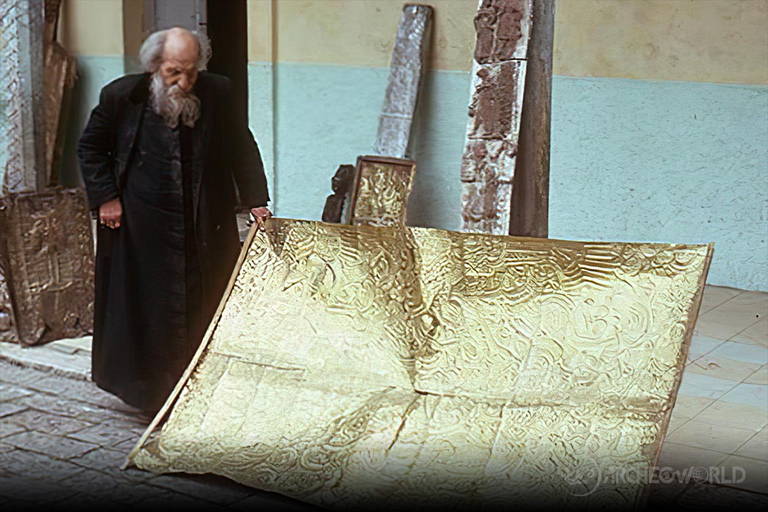
END:
Looking into the future, Cueva de los Tayos may continue to captivate the interest of scientists, archaeologists, and explorers. With ongoing technological advancements, new scientific and archaeological methods may be applied for in-depth research to unravel potential mysteries within this cave. Scientists could utilize advanced geological exploration techniques, drones, laser scanning, and other tools to more precisely map the cave’s structure or search for undiscovered spaces hidden deep within the cave.
Furthermore, archaeological and geological studies of the surrounding areas may provide additional insights into the activities and evolution of early humans in the region. Future scientific expeditions could further validate or challenge the early assumptions about the presence of a lost civilization and mysterious artifacts inside the cave.
On another note, the protection and management of the area around Cueva de los Tayos are crucial. Strengthening conservation measures ensures that the cave is not subjected to unnecessary disturbance or damage, preserving its pristine state. This requires collaboration among the international community, local governments, and the scientific community to ensure that research and exploration of this unique cave are conducted in a sustainable and responsible manner.
In conclusion, the future prospects of Cueva de los Tayos depend on the continued attention and efforts of scientists and researchers. The cave may persist in providing significant information about human history, geology, and archaeology, serving as an ongoing response to humanity’s desire for exploration.
More UFOs and mysterious files, please check out our YouTube channel: MysFiles
Lacerta Files: Human beings are the product of genetic engineering by alien civilizations.
